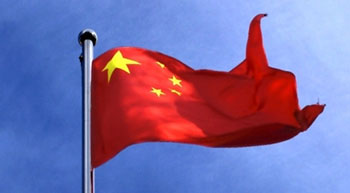by Xinhua writers Wu Xia, Wang Lei, Liu Yang
BEIJING, June 17 (Xinhua) -- China's Belt and Road Initiative to reconnect countries along the ancient Silk Road through closer economic, trade and cultural ties could expect early harvest, with mutual interests serving as the key driver behind thriving cooperation amid global economic uncertainties.
"The Belt and Road Initiative, though initiated by China, is not only about China," Chinese President Xi Jinping said late April at a group study on the history of the Silk Road and Maritime Silk Road.
"I hope people in all countries along the Belt and Road will actually feel the benefit brought by the initiative."
The Belt and Road Initiative, which comprises the Silk Road Economic Belt and the 21st Century Maritime Silk Road, was brought up by Xi in 2013, with the aim of building a trade and infrastructure network connecting Asia with Europe and Africa along the ancient Silk Road routes.
It aims to boost not only China's development but also that of other countries, Xi said.
"While taking care of our own interests, we will give more consideration and care to the interests of other countries," he said.
Hu Angang, professor of economics from Tsinghua University, said that China, as a major responsible player in the global community, is being very open and cooperative in its Belt and Road Initiative, so as to bind its own interests with those of other countries.
Professor Wang Yiwei with Renmin University echoed Hu's remarks, saying that the initiative is both Chinese and global, as it not only solves China's development problems but also those of other countries.
STIMULATING GROWTH
While global economic recovery remains fragile, China's Belt and Road Initiative offers a huge potential to inject vigor into the world economy, given that it covers about 4.4 billion people in more than 60 countries, or 63 percent of the global population.
The initiative serves as a timely cure for the post-crisis world economy by providing badly-needed public goods, according to Jin Qi, chair of the 40-billion-U.S. dollar Silk Road Fund established by the Chinese government in late 2014.
The fund, which has made three substantial investments in less than a year since its inception, is a visible example of China's action in engaging in global infrastructure investment and promoting sustainable development.
The win-win philosophy behind the Belt and Road Initiative is the starting point for China's positive interaction with the rest of the world, and serves as a platform for building consensus from home and abroad, said Hu.
A good example is the Piraeus port, the largest of its kind in Greece, which reaped abundant benefits from working with Chinese enterprises through the initiative, despite the lackluster, debt-ridden Greek economy.
On April 8, China's state-run shipping giant, China COSCO Shipping Corporation Limited, struck a deal with Greece's privatization fund HRADF to take over a 67-percent stake in the Piraeus port.
The results of the first six years of operation by a subsidiary of China COSCO Shipping at Piraeus are already impressive. Taxes and pay rolls attributed to the Greek government and employees have reached up to 500 million euros (567 million dollars).
EARLY HARVEST
So far, up to 34 countries and international organizations have inked deals with China to build the Belt and Road Initiative, while over 70 countries and organizations have voiced support for and willingness to join the initiative.
Thanks to the Belt and Road Initiative, a network of regional inter-connectivity is gradually taking shape. The Hungary-Serbia railway and the Jakarta-Bandung high-speed rail in Indonesia have begun construction, while a pan-Asia railway network including the China-Laos, China-Thailand railways have been launched. A number of highway projects are being pressed for implementation.
In addition, economic corridor construction has made substantial progress. Many major projects under the China-Pakistan Economic Corridor have begun construction, while progress has been made on the China-Mongolia-Russia economic corridor, the new Eurasia land bridge economic corridor, and the Bangladesh-China-India-Myanmar economic corridor.
Meanwhile, financial mechanisms have played a supportive role in the initiative. The Silk Road Fund and the Asian Infrastructure Investment Bank have begun operation, while industrial capacity cooperation funds between China and Africa and China and Latin America have been set up and put into use, respectively.
Under the initiative, trade and investment have boomed, with free trade agreements and regional cooperation taking quicker steps. Trade and investment growth in areas within the Belt and Road Initiative have witnessed more than twice the speed of global average.
Cultural and people-to-people exchanges have grown much closer among countries involved in the initiative. China has launched such events as culture years, art festivals and the Silk Road book projects along the routes.
The Silk Road has been successfully included into the UNESCO World Heritage list, while a joint application has started for the inclusion of the Maritime Silk Road into the list.
"The early harvest of the initiative is a testimony to the validity of the philosophy behind the initiative," said Zhai Kun, a professor of international relations at Peking University.
UPGRADE OF CHINA'S "GO GLOBAL STRATEGY"
The Belt and Road Initiative has not only poured money and projects into foreign countries, but also gathered experience and reputation for Chinese companies themselves.
The Belt and Road Initiative is an upgrade version of China's "go global strategy," said Sun Ziyu, vice president of the China Communications Construction Company Ltd. (CCCC).
"Through the construction of major infrastructure projects along the 'Belt and Road,' Chinese enterprises that have ventured out of China are adopting new business models, seeking business and structural upgrades to participate in international competitions at a higher level, promoting the influence of Chinese firms and brands in the process," he told Xinhua.
Sun's company has participated in the construction of signature infrastructure projects, including Korakoram highway linking China and Pakistan, the Gwadar port in Pakistan, the Hambantota port in Sri Lanka, the Suramadu Bridge in Indonesia, the Hungary-Serbia railway and the Mombasa-Nairobi railway.
The projects spanned from Asia and Europe to Africa, covering completely different cultural, political, and economic landscapes, said Sun.
Only after experiencing such diversities can Chinese companies formulate mechanisms to properly assess and manage risks, and establish and improve their corporate social responsibility management system, he said.
"During the construction of a project in Kenya, over 86 percent of the workers were hired locally. The CCCC has created over 19,500 jobs for Kenyans with just the Mombasa-Nairobi railway project," he said.
Li Shizhong, regional manager of HydroChina Group in Sri Lanka, said his company placed corporate social responsibility high on its priority list while building the country's biggest dam.
"We strictly followed local laws and regulations, and applied the highest standards while constructing the dam. We also provided assistance to locals, as well as hired and trained local employees, to win the hearts of the locals," he said.
The Daily News and Sunday Observer, two local media which have been suspicious of the Chinese presence before, have entirely come around in attitude after they have investigated the impact the Chinese had on local society, and have released positive reviews on the Chinese projects, Li said.
(Xinhua reporters Feng Wuyong, Zhang Wei, Liu Lili, Liu Lina, Liu Yifang, Qiao Jihong, Fan Yu contributed to this report.)










